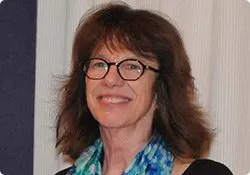Q+A with Colleen Cavanaugh | Harvard University Graduate School of Arts and Sciences

Note: Harvard University Professor Colleen Cavanaugh is an MBL Whitman Center scientist and Speaker of the MBL Society. In this interview, she discusses her longtime association with Woods Hole, including an undergraduate research project on horseshoe crab mating, subsequent work with microbial ecology pioneer John Hobbie at the MBL Ecosystems Center, and the remarkable discoveries she made about microbes living in hydrothermal vents through her collaboration with Woods Hole Oceanographic Institution scientists.

NAME: Colleen Cavanaugh, PhD ’85
FIELD OF STUDY: Biology
TODAY: Edward C. Jeffrey Professor of Biology and Co-Director of the Microbial Sciences Initiative
Colleen M. Cavanaugh’s ground-breaking work explaining the biochemistry of symbiosis between giant tube worms living amidst hydrothermal vents deep on the ocean floor and the one-celled bacteria that live inside them transformed how scientists understood the symbiotic role that bacteria play in chemosynthesis. Her research illuminates the microbial dimensions of symbioses and also has important evolutionary implications. ...
What drew you to science?
I knew from a young age I was interested in science. For many people who go into biology research one of the main entryways is fieldwork—and that’s how it was for me. As an undergraduate at the University of Michigan, I took a course on marine ecology, followed by a six-week, U of M-sponsored course in Woods Hole, Massachusetts, that also tapped into scientists at the Marine Biological Laboratory (MBL) and the Woods Hole Oceanographic Institution (WHOI).
Source: Q+A: Colleen Cavanaugh | Harvard University – The Graduate School of Arts and Sciences